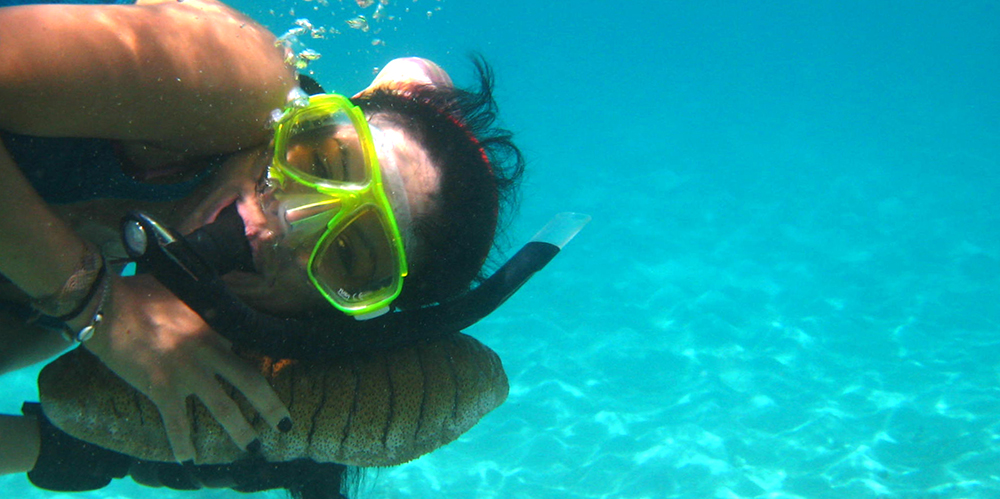Student Spotlights
Student Spotlights
Student Spotlights
2/2/2018
UOG Marine Lab Student Researches the Genetics of Balati
UOG Marine Lab Student Researches the Genetics of Balati
Allison Miller never planned to become enamored with balati.
The 27-year-old California-native finished her biology degree at the University of California San Diego and moved to Guam for her masters degree. When she arrived at the University of Guam she had not yet chosen a specific area of study, but in a few short months her area of focus began an unexpected turn toward sea cucumbers.
“I knew what they were, but I never thought I would work on them like this,” she explained.
Within a few months, her plans had changed. She heard about the Tree of Life Project sponsored by the National Science Foundation. Her new goal became how to figure out how sea cucumbers were related to each other.
Several years ago, scientists mapped the family trees of sea cucumbers by looking at different external characteristics like the number of tentacles or presence of ossicles, or little bones. With new technology, scientists have begun examining the genetic makeup of these diverse ocean animals to see beneath the squishy exterior and seek out other potential connections.
Miller spent months scuba diving and snorkeling around Guam and Southeast Asia to collect sea cucumbers samples. She scoured other teaching labs for preserved sea cucumbers. A professor from the Scripps Institute of Oceanography also helped collect deep-sea samples near Antarctica. Her love of sea cucumbers increased to the point where she affectionately began referring to them as “cukes.”
Once the “cuke” samples were collected, tissue was pulled from each animal and put into machines that can extract the DNA information. When the results came back from the DNA sequencing lab, Miller entered the data into a cleverly-named program called “Geneious.”
Then the real work began. She studied, compared, contrasted and statistically-analyzed the genetic makeup of her samples for months. The culmination of her hard work was realized when she successfully presented her research to a committee of advising professors. Her successful presentation means she will not only graduate in May 2015 with her master’s degree in Marine Biology, but she is well on her way to having her work published in a scientific journal.
Now that she has three years of sea cucumber genetic work under her belt, Miller gets obviously excited when she talks about different types of balati.
“Recently they are finding out that some species in one order may have extracts that can treat pancreatic, lung, breast or colon cancer,” she explains. Her research may help scientists easily see the connections between different sea cucumbers and find which species may have the correct extract.
She also gets excited when she talks about the “cute” deep sea cucumbers known as sea pigs. She gets increasingly more animated when she explains how some sea cucumbers have bioluminescence and can glow if they are ever attacked. The glowing particles attach to the predator and “light it up like a Christmas tree,” she explains.
Although she didn’t start her graduate work with a love of sea cucumbers, she is certainly finishing it with that sentiment.


